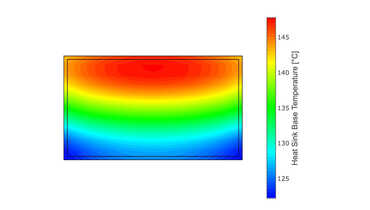In today's fast-paced technological landscape, the demand for efficient, responsive, and intelligent systems is higher than ever. Human-Machine Interface (HMI) systems, which allow humans to interact with machines and devices, are a critical component in various industries, including automotive, manufacturing, healthcare, and consumer electronics. The integration of edge computing into embedded HMI systems represents a significant advancement, promising enhanced performance, reduced latency, and improved user experiences. This blog post explores the pivotal role of edge computing in embedded HMI systems, highlighting its benefits, applications, and future potential.
Understanding Embedded HMI Systems
Embedded HMI systems are specialized computing systems integrated into devices to provide intuitive and interactive interfaces for users. These systems are designed to perform specific tasks and are characterized by their ability to operate with minimal user intervention. Common examples of embedded HMI systems include touchscreens in cars, control panels in industrial machinery, and user interfaces in medical devices.
The primary goals of embedded HMI systems are to simplify complex operations, improve user interaction, and enhance the overall functionality of the device. However, achieving these goals requires addressing several challenges, such as ensuring real-time responsiveness, managing limited computational resources, and maintaining a reliable connection to the cloud or centralized servers.
The Emergence of Edge Computing
Edge computing is a distributed computing paradigm that brings computation and data storage closer to the location where it is needed, typically at the edge of the network. This approach contrasts with traditional cloud computing, where data and processing are centralized in remote data centers. By processing data locally or near the source, edge computing significantly reduces latency, bandwidth usage, and the reliance on continuous cloud connectivity.
The rise of edge computing is driven by the increasing volume of data generated by IoT devices, the need for real-time analytics, and the demand for enhanced privacy and security. In the context of embedded HMI systems, edge computing offers a transformative solution to many of the challenges these systems face.
Benefits of Edge Computing in Embedded HMI Systems
Reduced Latency
One of the most significant advantages of edge computing in embedded HMI systems is the reduction of latency. Since data processing occurs closer to the device, the time taken to send data to and from a remote server is minimized. This leads to faster response times and a more seamless user experience, which is crucial for applications requiring real-time interaction, such as autonomous vehicles or industrial automation.
Enhanced Performance
Edge computing enables more efficient use of computational resources by offloading tasks from centralized servers to local edge devices. This distributed approach allows for more balanced and optimized processing, resulting in improved overall system performance. Embedded HMI systems can thus handle more complex tasks and provide richer functionalities without overwhelming the central server.
Improved Reliability
Relying solely on cloud-based processing can be risky in environments where network connectivity is unreliable or intermittent. Edge computing enhances the reliability of embedded HMI systems by ensuring that critical data processing and decision-making can occur locally, even in the absence of a stable internet connection. This is particularly important in industrial settings, remote locations, or mobile applications.
Scalability and Flexibility
Edge computing provides a scalable and flexible infrastructure for embedded HMI systems. As the number of connected devices and the volume of data they generate continue to grow, edge computing can easily accommodate this expansion without overburdening centralized servers. Additionally, edge computing allows for easier integration of new features and updates, ensuring that HMI systems remain up-to-date and capable of meeting evolving user needs.
Enhanced Security and Privacy
With data processed locally, edge computing reduces the risk of sensitive information being transmitted over potentially insecure networks. This enhances the security and privacy of embedded HMI systems, which is especially important in applications involving personal or confidential data, such as healthcare devices or smart home systems.
Applications of Edge Computing in Embedded HMI Systems
Automotive Industry
In the automotive industry, edge computing plays a crucial role in the development of advanced driver-assistance systems (ADAS) and autonomous vehicles. Embedded HMI systems in these applications require real-time data processing for functions such as collision detection, lane-keeping assistance, and adaptive cruise control. By leveraging edge computing, these systems can process sensor data locally, enabling faster decision-making and enhancing driver safety.
Industrial Automation
Edge computing is revolutionizing industrial automation by enabling real-time monitoring and control of machinery and processes. Embedded HMI systems in manufacturing plants can collect and analyze data from sensors and equipment locally, allowing for immediate responses to anomalies or failures. This leads to improved operational efficiency, reduced downtime, and predictive maintenance capabilities.
Healthcare
In the healthcare sector, embedded HMI systems are used in medical devices such as patient monitors, diagnostic equipment, and wearable health trackers. Edge computing allows these devices to process data locally, providing timely insights and alerts to healthcare professionals. This is critical for patient care, where quick decision-making can significantly impact outcomes.
Smart Home and Consumer Electronics
Edge computing enhances the functionality of smart home devices and consumer electronics by enabling local data processing and decision-making. Embedded HMI systems in smart thermostats, security cameras, and home automation systems can operate more efficiently and respond to user inputs faster. Additionally, edge computing improves the privacy and security of these devices by minimizing the amount of data sent to the cloud.
The Future of Edge Computing in Embedded HMI Systems
The integration of edge computing into embedded HMI systems is still in its early stages, but the potential for future advancements is immense. As edge computing technology continues to evolve, we can expect to see even more sophisticated and capable HMI systems across various industries.
Advancements in AI and Machine Learning
The combination of edge computing with artificial intelligence (AI) and machine learning (ML) will drive significant advancements in embedded HMI systems. By deploying AI and ML models at the edge, these systems can perform complex data analysis and decision-making locally, leading to smarter and more autonomous operations. For instance, predictive maintenance algorithms in industrial HMI systems can detect equipment failures before they occur, minimizing downtime and reducing costs.
Increased Adoption of 5G
The rollout of 5G networks will further enhance the capabilities of edge computing in embedded HMI systems. With higher data transfer speeds and lower latency, 5G will enable more seamless and reliable connectivity between edge devices and central servers. This will facilitate the development of more advanced HMI applications, such as real-time augmented reality (AR) interfaces and remote robotic control.
Edge-to-Cloud Integration
While edge computing offers numerous benefits, the integration of edge and cloud computing will provide a comprehensive solution for embedded HMI systems. This hybrid approach allows for the best of both worlds: real-time processing and decision-making at the edge, combined with the extensive storage and analytical capabilities of the cloud. This synergy will enable more robust and scalable HMI systems that can handle a wide range of applications and data-intensive tasks.
Conclusion
Edge computing is poised to play a transformative role in the evolution of embedded HMI systems. By bringing computation and data storage closer to the source, edge computing addresses many of the challenges faced by traditional HMI systems, including latency, performance, reliability, and security. As technology continues to advance, the integration of edge computing with AI, 5G, and cloud computing will unlock new possibilities and drive the development of more intelligent and responsive HMI systems across various industries.
The future of embedded HMI systems is undoubtedly intertwined with the advancements in edge computing, promising a new era of innovation and efficiency in human-machine interactions.



